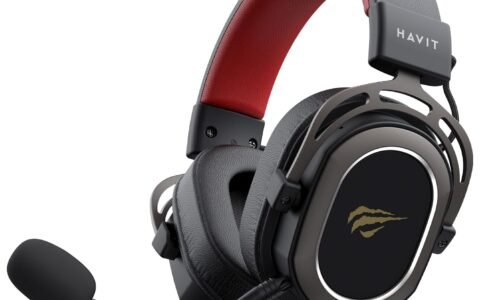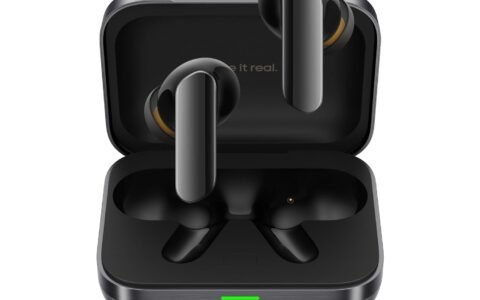In today’s digital age, choosing the right laptop is crucial for enhancing productivity, whether for work, study, or a blend of both. Two of the most popular contenders in this space are the MacBook, known for its sleek design and robust performance, and Dell, recognized for its wide range of customizable options and reliability. This article delves into a detailed comparison between the MacBook and Dell laptops, focusing on productivity features, performance, design, and value for money. If you’re on the hunt for your next productivity powerhouse, this guide will help you decide which laptop suits your needs best, especially when shopping from trusted retailers like Walmart.
Design and Build Quality
MacBook: Elegance Meets Durability
Apple’s MacBook is renowned for its minimalist design and premium build quality. Crafted from a single piece of aluminum, MacBooks exude an air of sophistication and durability. The unibody design not only looks sleek but also ensures that the laptop is sturdy and resistant to daily wear and tear. The MacBook’s lightweight nature, especially in the MacBook Air model, makes it highly portable—an essential feature for students and professionals who are constantly on the go.
The MacBook’s design also extends to its keyboard and trackpad, which are considered among the best in the industry. The Magic Keyboard provides a comfortable typing experience with just the right amount of key travel, while the large Force Touch trackpad offers precise control and multi-touch gesture support, enhancing overall productivity.
Dell: Versatility and Customization
Dell, on the other hand, offers a more diverse range of designs across its various laptop lines, including the XPS, Inspiron, and Latitude series. The XPS series, Dell’s flagship line, is particularly noted for its sleek design, premium materials, and ultra-thin bezels, providing an immersive viewing experience. Dell laptops often feature carbon fiber or brushed aluminum in their construction, ensuring both style and durability.
One of Dell’s significant advantages is the level of customization it offers. Whether you’re looking for a laptop with specific hardware configurations or unique design elements, Dell’s customization options allow you to tailor your laptop to meet your exact needs. This versatility is particularly beneficial for professionals who require specific performance features without compromising on design.
Winner: MacBook edges out in terms of overall design elegance and build quality, but Dell takes the lead in versatility and customization, catering to a broader audience.
Display and Graphics
MacBook: Retina Display Excellence
Apple’s Retina Display is one of the standout features of the MacBook, known for its sharp resolution, vibrant colors, and excellent brightness. The Retina Display, available on both the MacBook Air and MacBook Pro, makes a significant difference for users who require precise color accuracy, such as graphic designers, video editors, and photographers. The True Tone technology, which adjusts the display’s color temperature based on ambient lighting, enhances viewing comfort, making it easier on the eyes during extended periods of use.
In terms of graphics, the MacBook Pro models are equipped with powerful GPUs, including the Apple M1 chip’s integrated graphics or, in higher-end models, dedicated AMD Radeon Pro GPUs. These options ensure that MacBooks can handle intensive graphic tasks with ease, making them ideal for creative professionals.
Dell: Immersive Display Options
Dell offers a wide range of display options across its laptop series. The Dell XPS 13 and 15, for example, feature InfinityEdge displays with virtually borderless bezels, offering a stunning edge-to-edge viewing experience. Dell also provides options for 4K Ultra HD displays, which deliver crisp visuals and are ideal for content creators and professionals who demand the highest resolution.
For those focused on productivity, Dell’s ComfortView technology reduces harmful blue light emissions, which can help reduce eye strain during long working hours. Additionally, the color accuracy on Dell’s higher-end models is exceptional, making them suitable for professionals who need to ensure their work looks exactly as intended.
Winner: MacBook takes the lead in display quality with its Retina Display and superior color accuracy, but Dell provides competitive options, especially with its 4K Ultra HD displays.
Performance and Productivity
MacBook: Powerhouse Performance with Apple Silicon
The introduction of Apple’s M1 chip has revolutionized the MacBook’s performance, making it one of the most powerful laptops on the market. The M1 chip integrates the CPU, GPU, and RAM into a single system-on-a-chip (SoC), delivering unprecedented speed and efficiency. For productivity tasks such as multitasking, video editing, and coding, the MacBook’s M1 chip offers smooth, lag-free performance, even under heavy workloads.
Moreover, the macOS operating system is optimized for productivity, offering features like Mission Control, Spaces, and Continuity that seamlessly integrate your workflow across Apple devices. The long battery life, often exceeding 15 hours on a single charge, ensures that you can work or study without constantly searching for a power outlet.
Dell: Customizable Performance for Every Need
Dell laptops, particularly the XPS and Latitude series, are equipped with the latest Intel Core or AMD Ryzen processors, offering strong performance across various tasks. Whether you’re using it for office work, programming, or multimedia editing, Dell’s performance is highly reliable. The ability to configure your Dell laptop with additional RAM, higher storage capacities, and dedicated GPUs, such as the NVIDIA GeForce RTX series, gives users the flexibility to build a machine tailored to their specific productivity needs.
Dell laptops also run on Windows, a versatile operating system that supports a wide range of productivity applications and offers features like virtual desktops, task view, and robust compatibility with enterprise software.
Winner: MacBook leads in performance with its M1 chip, providing unmatched speed and efficiency, while Dell offers strong performance with extensive customization options to meet various productivity needs.
Operating System and Software Ecosystem
macOS: Seamless Integration and Intuitive Interface
One of the MacBook’s greatest strengths is the macOS operating system, which is designed to work seamlessly with Apple’s hardware. The macOS interface is user-friendly, with features like Spotlight for quick searches, Siri for voice commands, and a robust suite of pre-installed applications like Safari, Mail, and the iWork suite. Additionally, macOS is known for its security features, including built-in encryption and regular updates, which help protect your data.
For users already in the Apple ecosystem, the MacBook offers unparalleled integration with other Apple devices like the iPhone, iPad, and Apple Watch. Features such as Handoff, AirDrop, and iCloud make it easy to start a task on one device and finish it on another, boosting productivity and streamlining workflows.
Windows: Versatility and Broad Application Support
Dell laptops run on Windows, an operating system known for its versatility and extensive software compatibility. Whether you’re using Microsoft Office, Adobe Creative Suite, or specialized software for engineering or design, Windows provides a platform that supports virtually every application available. Windows 11, the latest version, has enhanced productivity features, including virtual desktops, snap layouts for window management, and deep integration with Microsoft Teams for collaboration.
Windows also offers greater flexibility in terms of file management, system customization, and third-party software installations. For users who prefer an open system with broad compatibility and customization options, Dell’s Windows-based laptops offer significant advantages.
Winner: MacBook excels in seamless integration and an intuitive interface, especially for users within the Apple ecosystem, while Dell provides the versatility and broad application support that Windows users value.
Portability and Battery Life
MacBook: Lightweight and Long-Lasting
Portability is one of the MacBook’s key selling points, particularly with the MacBook Air. Weighing just under 3 pounds, the MacBook Air is incredibly light and easy to carry, making it ideal for students and professionals who need to work on the go. The MacBook Pro, while slightly heavier, still offers excellent portability given its performance capabilities.
When it comes to battery life, the MacBook is hard to beat. Thanks to the efficiency of the M1 chip, MacBooks can last up to 18 hours on a single charge, depending on usage. This long battery life ensures that you can work or study for extended periods without needing to recharge, making it a top choice for productivity.
Dell: Portable with Configurable Battery Options
Dell’s laptops, particularly the XPS series, are designed with portability in mind. The XPS 13, for example, weighs just around 2.7 pounds, making it comparable to the MacBook Air in terms of portability. Dell also offers various battery configurations, allowing users to choose a battery option that best suits their needs, whether it’s a lighter option for portability or a larger one for extended battery life.
While Dell laptops generally offer good battery life, they tend to vary more depending on the model and configuration. However, many Dell models can easily provide 10-12 hours of usage on a full charge, which is more than sufficient for most users.
Winner: MacBook leads in battery life and lightweight design, though Dell offers competitive portability with customizable battery options.
Value for Money
MacBook: Premium Price for Premium Quality
Apple’s MacBooks are undeniably premium products, both in terms of design and price. While they offer top-tier performance, build quality, and integration with the Apple ecosystem, they also come with a higher price tag. For users who value these features and are deeply invested in the Apple ecosystem, the MacBook provides excellent value for money. However, for budget-conscious users, the upfront cost of a MacBook might be a significant consideration.
Dell: Range of Options to Fit Any Budget
Dell offers a broader range of laptops at various price points, making it easier to find a model that fits your budget. From the high-end XPS series to the more affordable Inspiron models, Dell provides options that cater to different needs and financial constraints. Additionally, Dell often offers promotions and discounts, especially through retailers like Walmart, making it possible to get a high-performance laptop at a more accessible price.
Winner: Dell wins in terms of value for money due to its wide range of options and budget-friendly pricing, though MacBook offers premium quality for those willing to invest.
Conclusion: Which Laptop Is Best for You?
Choosing between a MacBook and a Dell laptop ultimately depends on your specific needs, preferences, and budget. If you’re looking for a laptop with top-notch design, seamless integration within the Apple ecosystem, and powerful performance, the MacBook is an excellent choice, especially for creative professionals and users who prioritize build quality and longevity.
On the other hand, if you value versatility, customization, and a wider range of options at various price points, Dell offers a compelling alternative. Whether you need a high-performance machine for intensive tasks or a budget-friendly laptop for everyday use, Dell’s extensive lineup has something for everyone.
When making your decision, consider where you’ll be purchasing your laptop. Retailers like Walmart offer a range of MacBook and Dell models, often with competitive pricing and financing options, making it easier to find the perfect laptop for your work and study needs.



